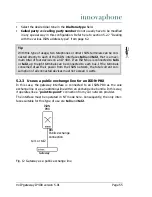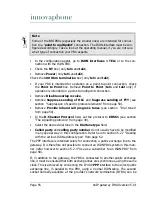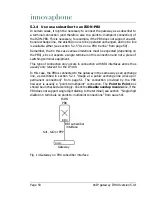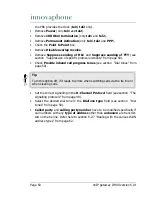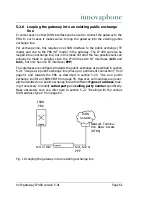
VoIP gateway IP400 version 5.01
Page 47
5.1
IP 400 ISDN interfaces
The IP 400 has three ISDN BRI interfaces, which are referred to as
PPP
,
tel1
and
tel2
(see page 7).
•
tel1
and
tel2
can be used for public exchange lines, for one or two tele-
phones, or for a PBX.
BRI
•
Disable overlap receive
suppresses a SETUP_ACK on incoming single
digit dialling on a point to multipoint connection, in TE mode.
•
Suppress sending of HLC
suppresses the transmission of
high layer
compatibility
information elements on the interface.
•
Suppress sending of FTY
suppresses the transmission of
facility infor-
mation
elements
on the interface.
•
Provide inband progress tones
(in TE mode only) enforces the genera-
tion of tones (dial tone, ring tone, busy tone) also in TE mode (always
generated in NT mode).
•
Generate connected time
adds the local gateway time to every out-
going CONNECT message.
• The
D-Channel Protocol
meanings:
EDSS1
= Euro ISDN,
QSIG
=
ECMA QSIG (
CR len
=1,
channel ID
like basic rate),
QSIG-PRI-ECMA1
= ECMA QSIG (
CR len
=2,
channel ID
as primary rate, B channels 1 to
30),
QSIG-PRI-ECMA2
= ECMA QSIG (
CR len
=2,
channel ID
as pri-
mary rate, B channels 1 to 15 and 17 to 31).
• The
Dialtone types
(in NT mode or with
Provide inband progress
tones
) meanings:
German PBX
= like German PBX system,
German
=
like German exchange,
US
= American dial tone,
UK
= British dial tone.
• Calling Line Identifiers (CLI) can be replaced via
ADD CGPN MAP
. These
replacements only apply to this interface (separately for incoming/outgo-
ing calls).
• Called numbers can be replaced via
ADD CDPN MAP
. These replacements
only apply to this interface (separately for incoming/outgoing calls).























